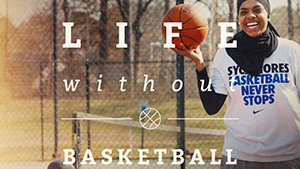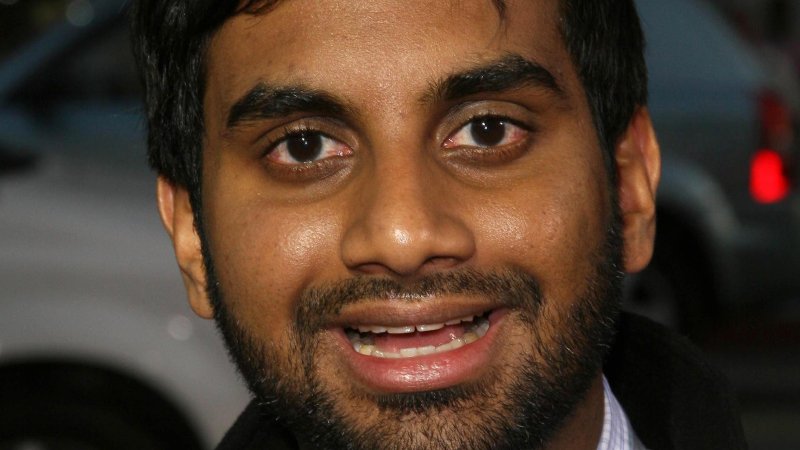Nike Starts Catering For Muslims
Nike’s announcement of the global release of its first hijab (or headscarf) for sportswomen, in May 2017, kicked up a huddle of mixed reactions. One may wonder what exactly is behind this new product: is it an altruistic move or an effort to cash in on a vast market? And how founded is any opposition to this addition to the sports apparel giant’s catalog?
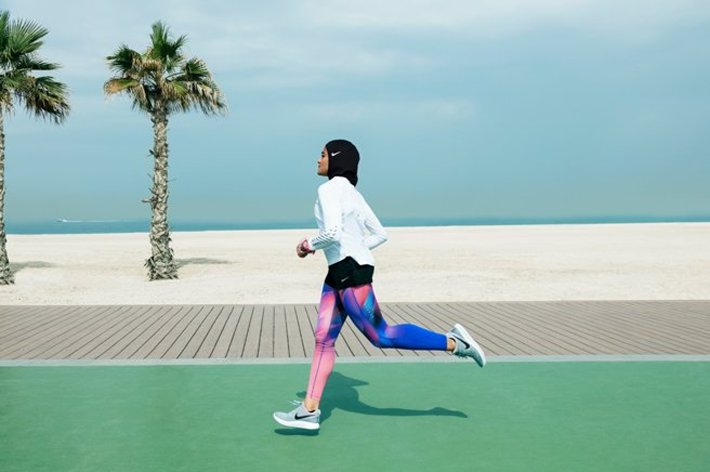
It might be fitting to first take a look at why the hijab is considered a necessary part of many Muslims’ wardrobes the world over. What explanation lies behind the veil, so to speak?
Let’s, first of all, do a little 101 on the subject:

While the veil or headscarf is commonly associated with Muslim women, their male counterparts also sometimes wear a head-covering in order to display modesty. In addition, Christian and Jewish women in some traditions wear a headscarf for cultural reasons or to appear unassuming or pious. So it’s not an item of attire exclusively reserved for Muslim women or girls.
As for why the hijab is worn by Muslim women, we should look to the text of the Qu’ran itself, in the Surah chapter 24:30:31: “The believing men are enjoined to lower their gaze and conceal their genitals and the believing women are enjoined to lower their gaze and conceal their genitals, draw their headdress to cover their cleavage, and not display their beauty… except to their husbands, fathers, their husbands’ fathers, their sons, husbands’ sons, their brothers or brothers’ sons…”
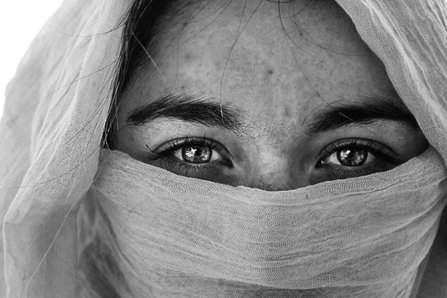
As an aside, with modern Western fashion the way it is, this may seem a foreign concept to many non-Muslims, but it seems to have stemmed from a pretty logical principle—to attempt to keep testosterone levels under control, wherever possible! There might just be a good argument in its favor, witness the recent “#MeToo” campaign that’s been rippling through our society… Food for thought.
Nike’s decision to launch a lightweight hijab for athletes, accompanied by the tagline “Sports is for everyone,” may seem a godsend or pure provocation, depending on which side of the fence one sits.
Someone who has decided to embrace the Muslim religion as his or her own is going to want to observe its scriptures fully. Not always an easy proposition in secular countries that strive to keep certain religions—or even religion, period—absent from everyday life. I lived in France for many years and remember the controversy over a group of Muslims and Sikhs who were expelled from their school in 2004 for wearing hijabs and turbans, respectively. When the case went to court, it was adjudicated that the students had violated the law and that if they didn’t wish to abide by France’s secular laws, they were still quite free to seek an education in the form of correspondence courses, instead. A similar incident occurred, again in France, in 1998, when two Muslim students in secondary school attended several physical education classes wearing headscarves and refused to remove them. It was decreed that the wearing of a veil, such as the Islamic headscarf, was incompatible with sports classes for reasons of health or safety. The court decision was that the penalty imposed (expulsion) was the consequence of the applicants’ refusal to comply with the rules applicable on the school premises and not of their religious convictions, as they alleged.
In this context, Nike’s decision to launch a lightweight hijab for athletes, accompanied by the tagline “Sports is for everyone,” may seem a godsend or pure provocation, depending on which side of the fence one sits. While Nike is not the first company to create hijabs for athletes, it is the first large-scale global corporation to prioritize the needs of this segment of the population. American Olympic fencer Ibtihaj Muhammad, who is featured in the Nike ad, said she hopes this step can make sports more inclusive to people of all backgrounds:
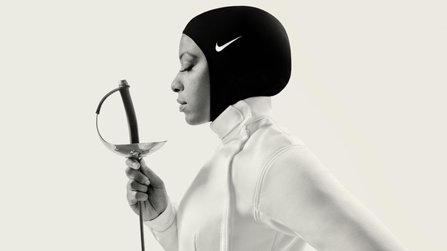
“The Nike Pro Hijab will help advance the conversation around hijabs and Muslim women in sports,” she said. But how much of this decision by the highly successful sports brand is a genuine desire to represent Muslim athletes and to what extent is it influenced by an urge to tap into a huge and potentially highly lucrative market sector?
“Regardless of the values driving this new product, it is always a welcomed move when corporations and media normalize the presence of Islam and Muslims in our world and especially in the U.S.,” says Hussam Ayloush, an executive director at the Council on American-Islamic Relations. “Such normalization helps weaken the rhetoric of fear and bigotry advanced by the powerful Islamophobia industry.”
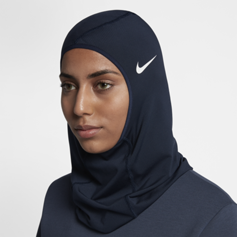
Besides, is it not simply smart for an international brand with a huge worldwide presence, such as Nike, to be providing for Muslim consumers? “One out of four people in our world is Muslim,” points out Ayloush. “It makes good business sense to cater to such a large segment of consumers. Over the past decade, we have seen many major corporations cater to this rapidly growing consumer market by introducing halal and other Sharia-compliant items, such as clothing, food, and financial products.”
Case in point: in January 2016, Dolce & Gabbana garnered international headlines by announcing it had designed a new hijab and abaya collection for Muslim women. In so doing, it joined Oscar de la Renta, Tommy Hilfiger and Mango on the roster of fashion giants going all-out to expand offerings specifically to Muslims. There have been some mixed reactions: “My initial thought was: So what? Abayas are already being sold,… this is nothing new,” Egyptian artist Deena Mohamed stated. “But clearly the issue with D&G’s line is less about the line itself and more about the message it sends. I viewed it from a business and marketing perspective. It seems like an inevitability that big brands would begin catering to a “Muslim” market given the massive consumer base of not just the Arab Gulf, but other abaya-wearing Muslims worldwide. It’s a mark in D&G’s favor that they were the first company to act on it on such a publicized scale, but I am too cynical to think of it in terms of a ‘win for representation.’”
Whatever the motivations involved, these launches are having a knock-on effect that cannot be ignored by any self-respecting multinational brand: L’Oreal Paris UK has recently included a hijab-wearing model in its Elvive World of Care Campaign. This is the first time a woman dressed in the religious headscarf has fronted a major mainstream advertisement for hair care. [1] Similarly, American Eagle Outfitters started selling a denim hijab, in 2017.
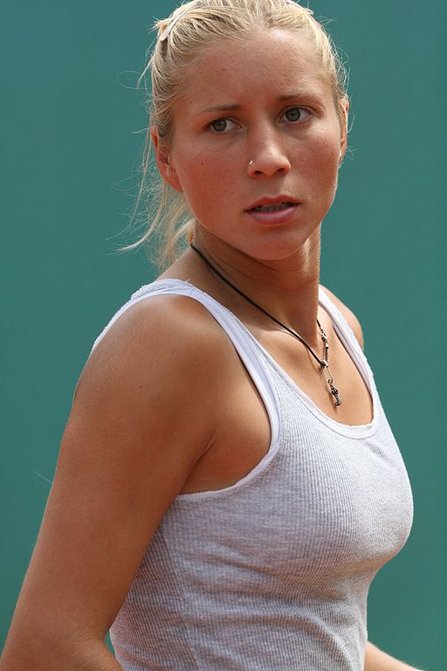
If a wave of religious tolerance is slowly but surely sweeping through society via the sports arena, then it can only be a win-win situation. Let the “Jewish Jordans” and “Aaron Libermans” wear their yamulkes as they dunk their way to success, and let Alona Bondarenka sport her cross and chain as she attempts her next ace. Because, when it boils down to it, it seems to me that one can put too much emphasis on a mere symbol and not enough on other, much more significant aspects of a person’s religion, such as to what degree it makes him or her want to reach out and help others. Sometimes, too much stress is placed on details instead of just getting on with the simplicity of life: playing, learning, dressing for fun, having dinner with friends, sharing important experiences. Basically, just plain living life to the full, hijab or no hijab.







